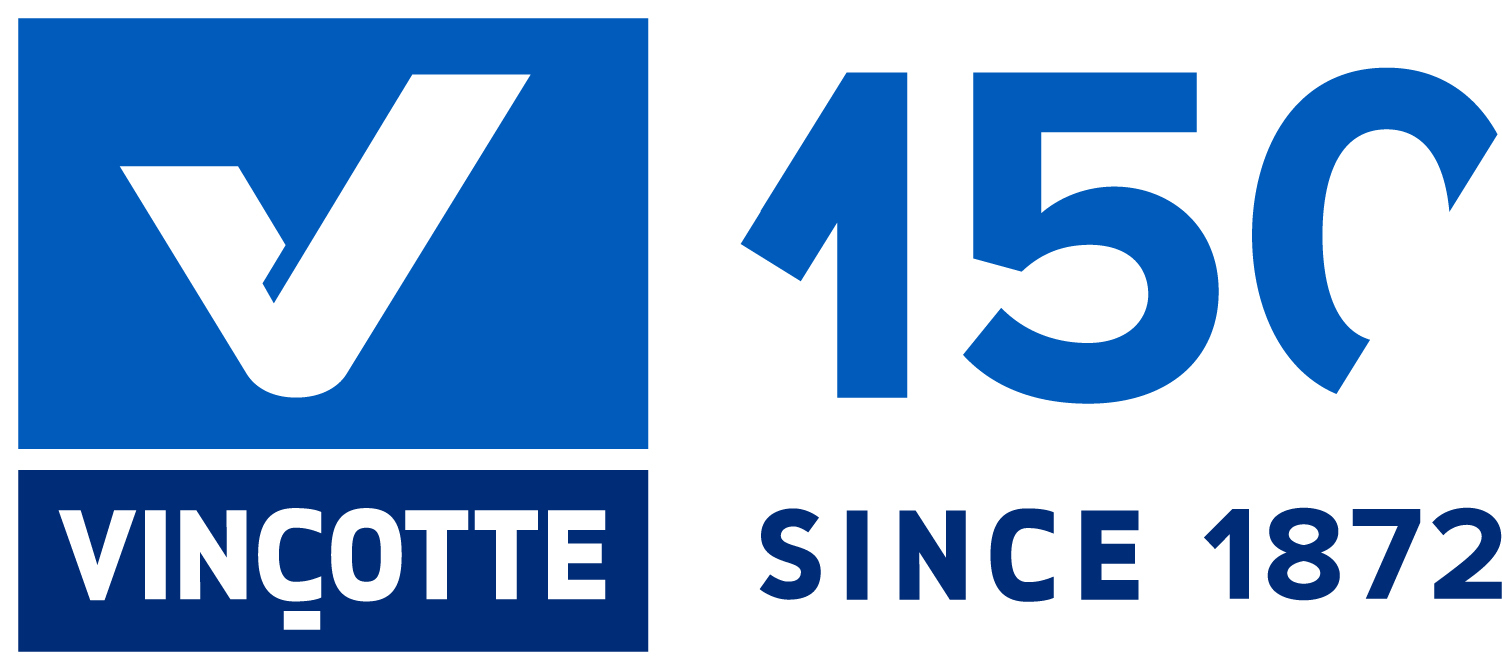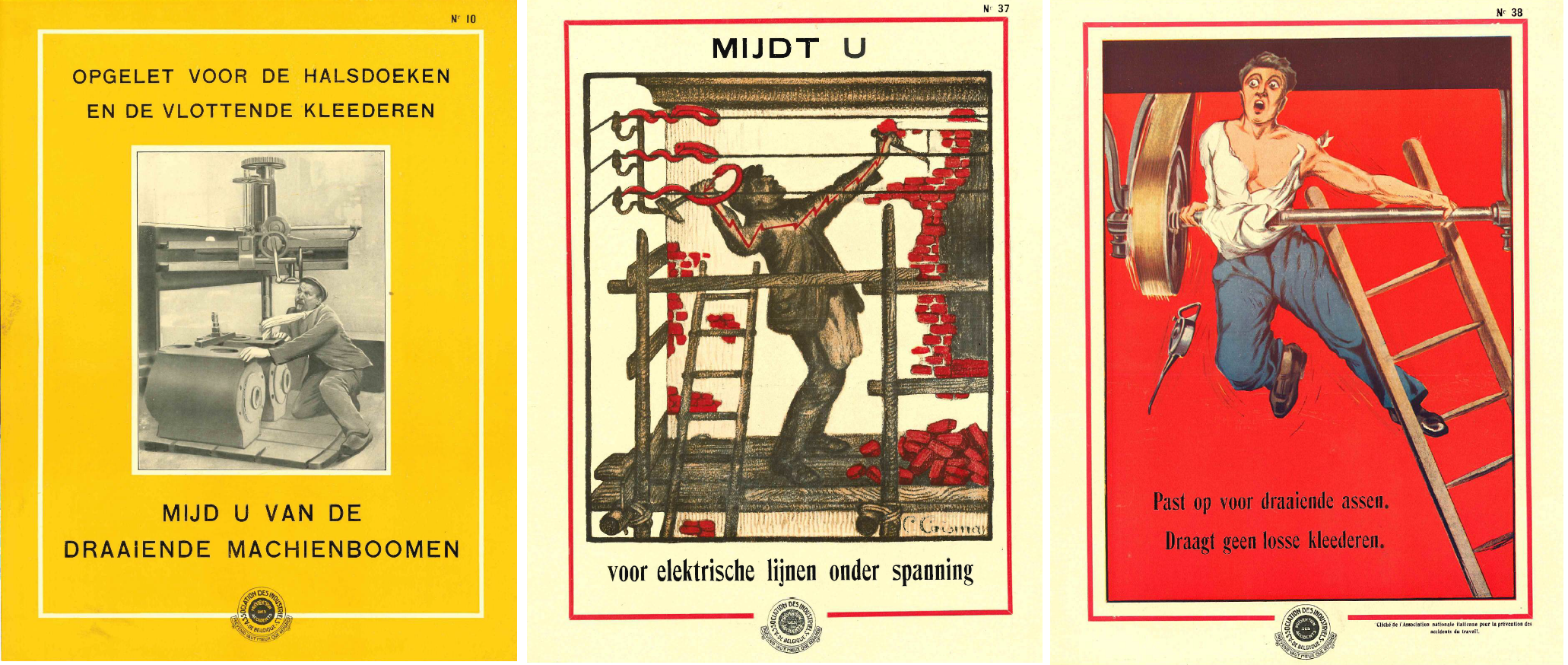Our history since 1872
The rich history of Vinçotte begins in 1872, almost 150 years ago. Throughout our history, we have regularly had to reinvent ourselves. We started as a result of exploding steam boilers, which was one of the biggest problems of the first industrial revolution. There was a need for more safety and control. Vinçotte offered the solution. When electricity was invented in 1890 and was increasingly used in industry, Vinçotte quickly adapted to this change. Innovation was in our blood even then, and this has not changed over the years.
Vinçotte would never have existed without its founder Robert Vinçotte, so in fact our history starts a little earlier than 1872...
1844
#
Jean-Henri Vinçotte, professor in Antwerp and his wife Julie Gobert had their first son in Borgerhout (Antwerp) on 26 May: Robert Vinçotte. Afterwards, 7 more children were born: Denise, Edmond, Auguste, Henri, Marguerite and Thomas Vinçotte. The latter would later become a renowned sculptor whose bronze sculptures can be found on the roof of the Royal Museum of Fine Arts in Antwerp (The Triumph of Fine Arts) and on the Cinquantenaire in the Brussels Cinquantenaire Park.
1865 #
Robert Vinçotte graduated in Liege as a mining engineer and doctor of physical and mathematical sciences.
1871 #
The research of the young engineer Robert Vinçotte into explosions of steam boilers, which was a major social problem in the first industrial revolution, was noticed by Maurice Urban, director of the Belgian railways. Belgium was then one of the first industrialised countries in the world after England.
The provisional "Association for the supervision of steam boilers" is founded in Brussels in August. Robert Vinçotte himself describes it as follows: "Explosions of steam boilers are a deplorable aspect of our industrial society. They are catastrophic because of the damage and unemployment they cause, abominable because they show that people's lives are less important than the expenditure on prevention, and they are one of the greatest causes of discontent among workers, along with other dangers at work". These visionary words are still our guiding light almost 150 years later.
All factory owners were written to with the historic words, "The Association was formed for a philanthropic purpose and has no profit motive; the funds of the Association will be devoted entirely to providing the fullest possible service."
By the end of 1872, the Association already had 500 members. At the top of the inspection reports, the name of the association appeared in graceful letters.

One of the co-founders and directors was Jean Piedboeuf (manufacturer of steam engines and brewer of the eponymous Piedboeuf brewery in Jupille, brewer of Jupiler). The other founders were engineer Descamps, Mr Detombay, Mr Evrard, engineer Fromont, Mr Halbrecq, Mr Halot, engineer Rau, Mr Smits, Mr Vaessen, Mr Prosper Van Den Kerchove (an important steam engine manufacturer in Ghent who worked for the German Krupp and the French Schneider, and who produced a 25,000hp steam engine for the Berlin Allgemeine Elektrizitäts Gesellschaft) and Mr Maurice Urban, director of the Belgian railroad company.
1873 #
With 3 engineers (including Robert Vinçotte himself), the Association is officialy founded and inspects some 500 steam boilers in Belgium.
After earlier trips abroad to Germany and the US, Robert Vinçotte travelled again to the United States, this time at the request of the Belgian government. His interest was mainly in the safety measures for steam boilers of the American industry, which was in full development. The result of this trip was a handbook containing rules for calculating the operational safety and resistance of the essential components of steam boilers.
Picture: steam vessel at Forges de Clabecq (CEOC brochure)
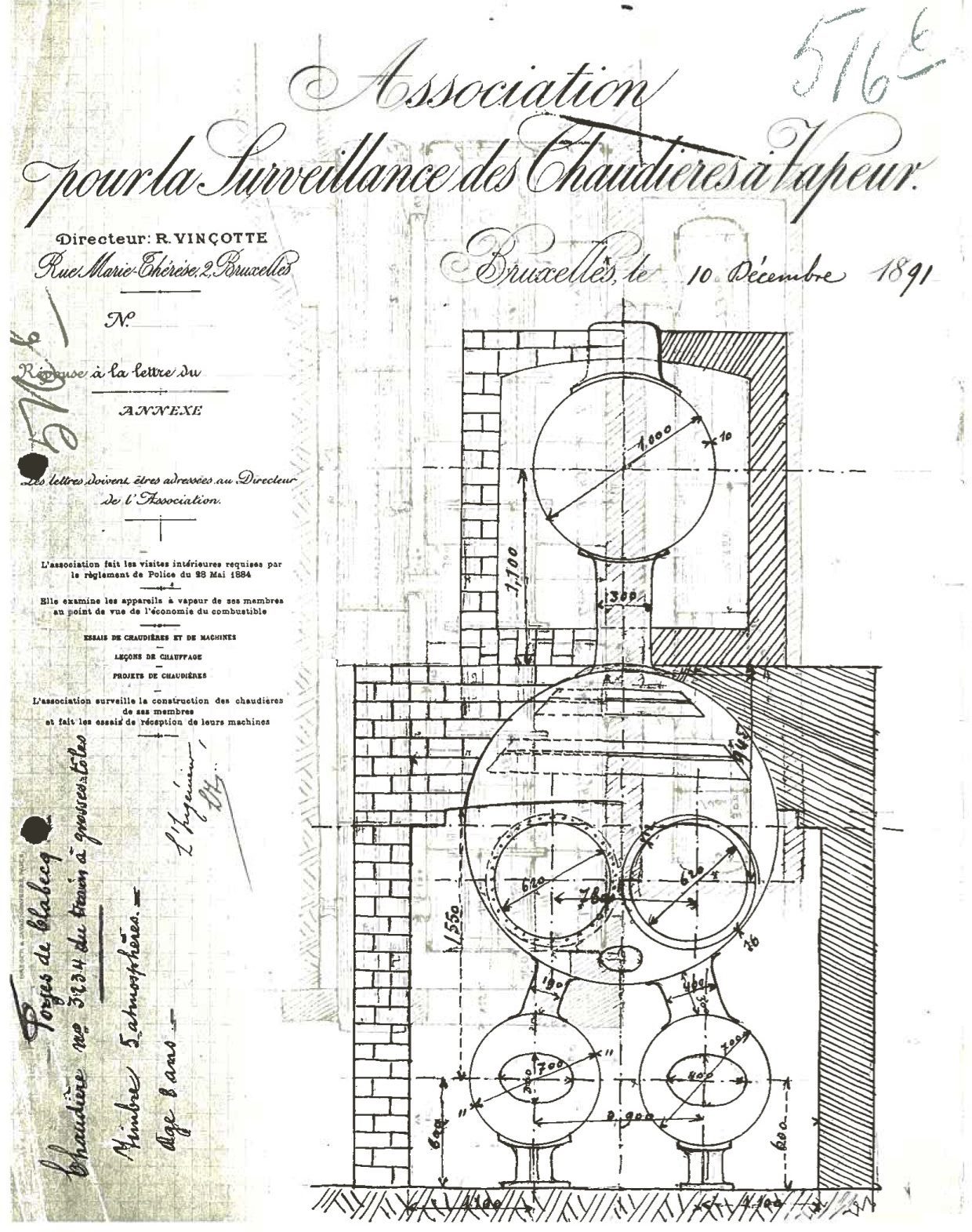
1882 #
Vinçotte = 10 year. The Association inspects already 2,000 steam boilers and proudly announces that only 0.17% of the six-monthly inspected boilers had failed in ten years.
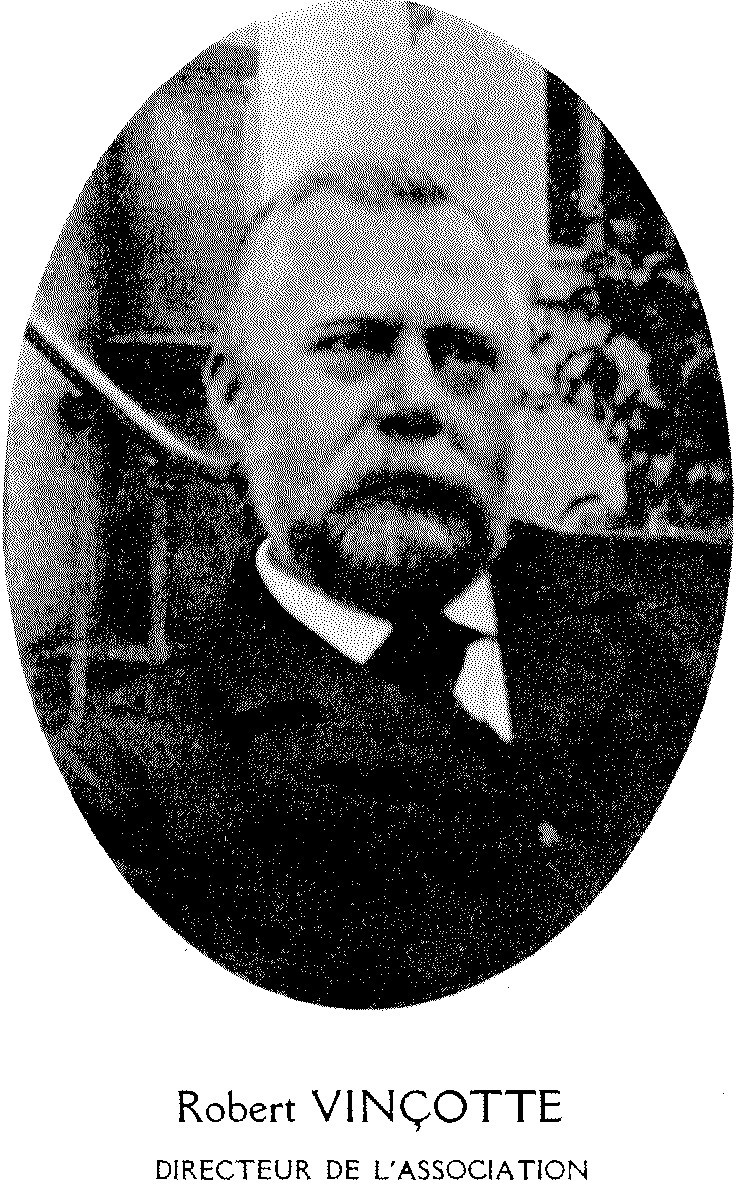
1890 #
The "Association of Belgian industrialists for the study and dissemination of engineers and measures for the protection of workers from accidents at work" (in short AIB) was founded by 13 engineers, captains of industry and parliamentarians at the instigation of Henri Adan, director of the Belgian insurance company Royale Belge on April 9th. In the speech he gave at the first meeting of the board of directors, Adan explicitly expressed his confidence in private initiative rather than state intervention: "As Mr Westerroiien van Mesteren, the promoter of the Dutch Association for the Prevention of Accidents in Factories and Construction Sites, said, it is of the utmost importance for a small country to join the international movement that allows the private initiative of the industrialist to do good without a coercive law that prescribes this duty and makes it odious." Robert Vinçotte was also involved in the creation of AIB as an advisor.
AIB's first logo contained the well-known saying by the Dutch humanist Erasmus: "Prevention is better than cure" and was used until 1957.
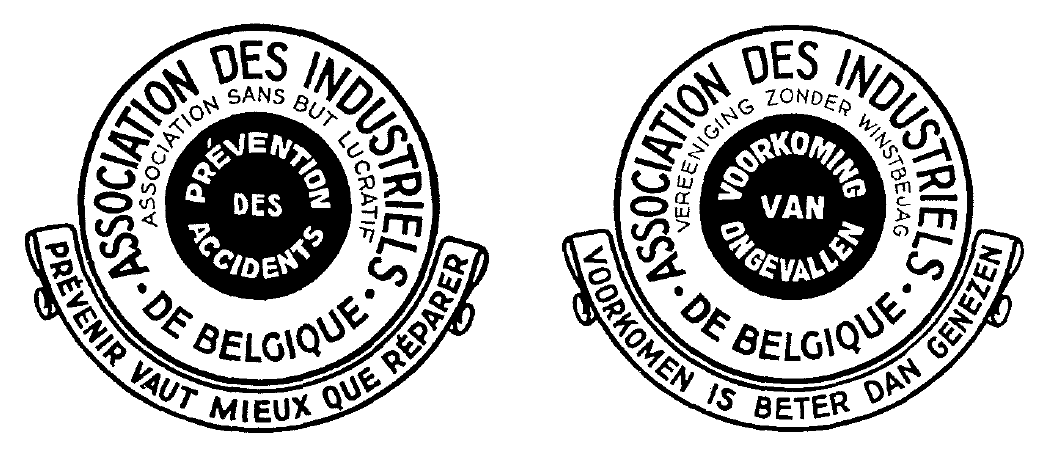
AIB was both complementary and competitive to the Association led by Robert Vinçotte. The two associations worked together throughout history, but there was also competition.
1894 #
In the beginning, AIB mainly focused on safety and training. But already in 1894, a new department was created that would inspect chains. The breaking of chains caused serious accidents in the mining and construction industry.
1904 #
Robert Vinçotte, who had made it his life's work to improve the working conditions of his contemporaries, dies after a study trip to Italy. He is succeeded as director of the association by his oldest son in 1909.
1905 #
A major revolution takes place, now known as the Second Industrial Revolution. Steam engines increasingly have to make way for electricity as the driving force. The great advantage of electricity over steam is that it is easy to transport. This made it available to small companies and, a little later, even to private individuals. The core task of the association remained the inspection of steam engines, but in addition a new service was set up that concentrated on electrical installations. Innovation was in our blood even then.
1910 #
The Association ssociation carries out twice as many inspections in Belgium alone as in France and Germany combined.
1922 #
The "Association pour la surveillance des chaudières à vapeur" changes its name and officially becomes the non-profit association Vinçotte as a tribute to its founder.
AIB starts making and distributing posters to alert employees to the dangers at work, based on the original prevention idea "prevention is better than cure".
1930 #
When commercial aviation was still in its infancy, Vinçotte inspectors checked whether the aircraft were built safely.
1938 #
Important collaboration between Vinçotte and AIB for the first X-ray inspections of welds. Among other things, the new bridges over the Albert Canal were checked in this way, and fortunately so, because after inspection it turned out that these bridges were dangerous and not suitable for the weight they were supposed to carry.
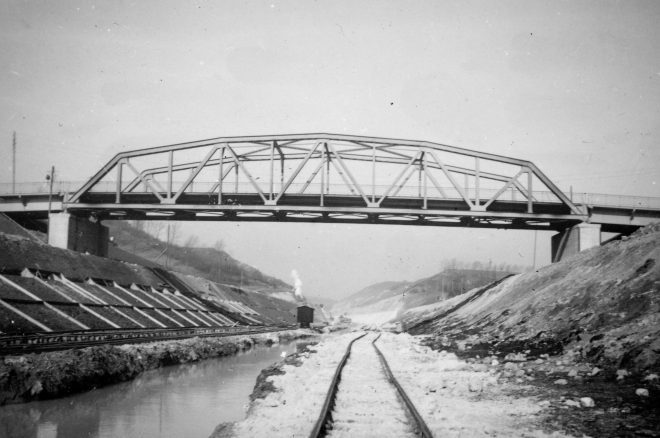
Vinçotte innovated with gamma ray inspections, using radium extracted from the Union Minière mines in Katanga.
AIB developed a unique machine that could apply a test load of 800 tonnes to cables and chains. No other machine worldwide could do this.
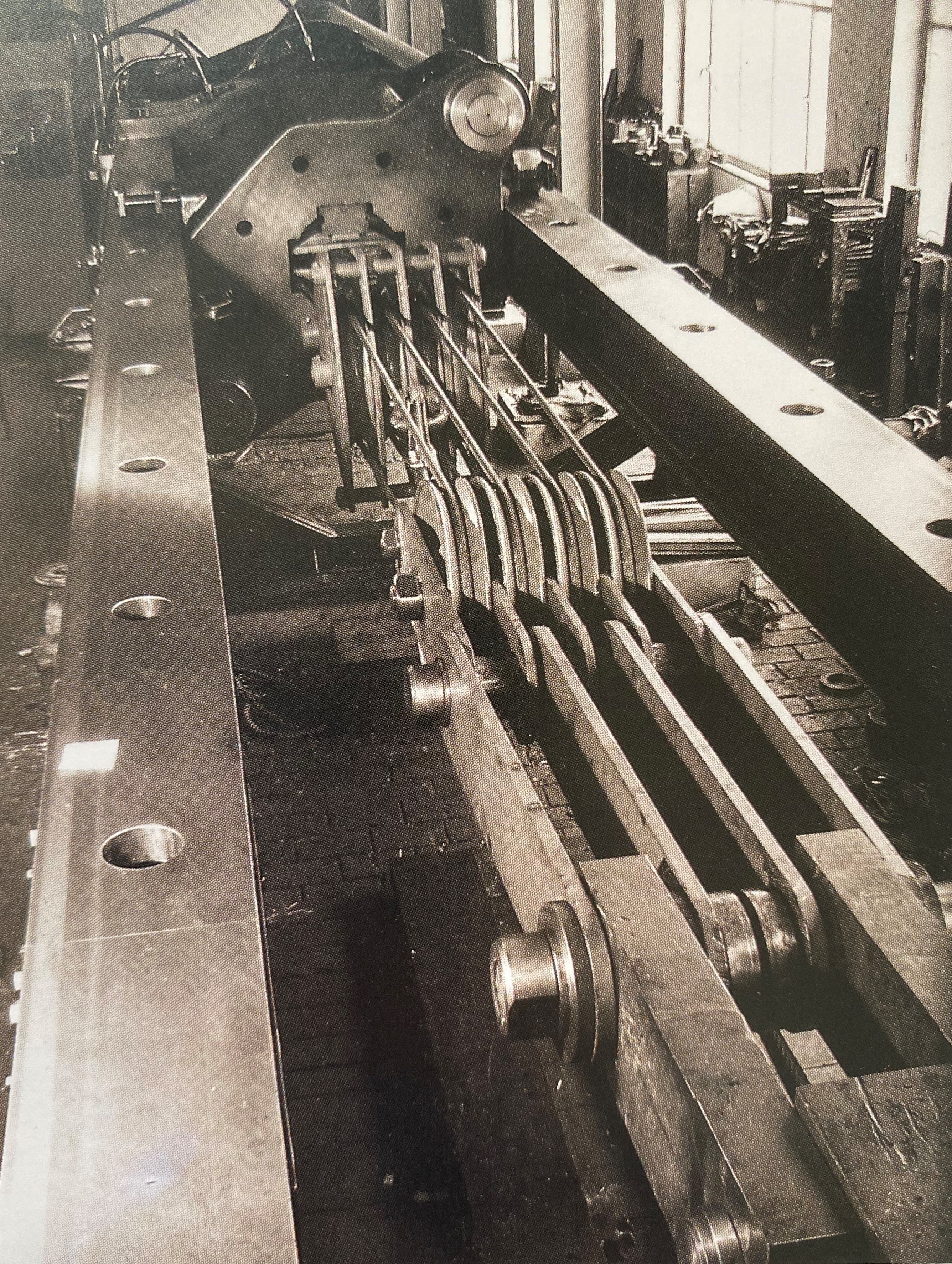
1947 #
Richard Vinçotte, son of Robert, makes a study trip to the United States
The new "General Regulations for Labour Protection" allow a wide range of activities for accredited inspection bodies such as Vinçotte and AIB
1955 #
AIB organises the First International Congress on Nondestructive Testing (NDT).
1957 #
AIB changes its logo and also adapts its tagline to "prevention is better than repair". All activities are shown in it and a chain is clearly present, referring to the now globally renowned checks on chains.
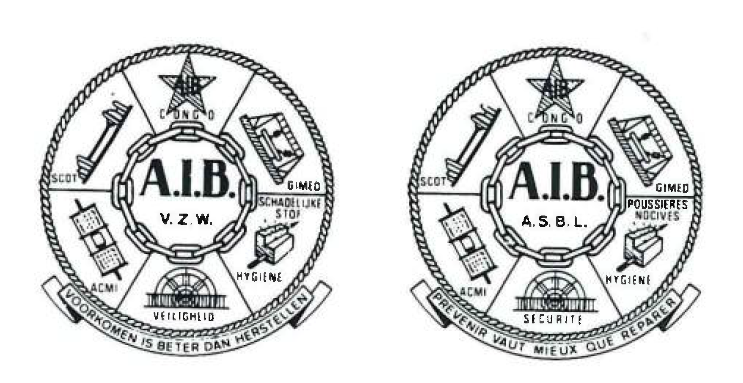
1958 #
AIB organises an international congress on prevention of accidents at work: the Second International Congress for the Prevention of Work Accidents
1962 #
AIB changes its logo again barely 5 years later and the iconic blue - still present in the Vinçotte logo - is introduced
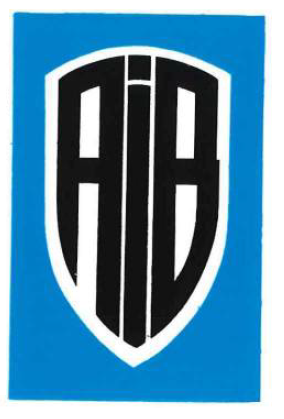
1965 #
Controlatom is founded.
1969 #
Vinçotte gains more and more international prestige and is allowed to inspect one of the largest turbo-alternators in the world, built in England for the United States.
A nuclear department is set up within Vinçotte. Vinçotte engineers are involved in the construction of the first nuclear power plants in Belgium.
1970 #
Vinçotte innovates with thermographic inspections and non-destructive testing (NDT) using eddy currents. Vinçotte also pioneered research into noise pollution and set up the first mobile laboratory to study air quality using samples.
Vinçotte also introduces a new logo in which our current logo can already be recognised.

1973 #
During the academic session on 7 June it can be solemnly announced that "100 years after the creation of Vinçotte, not a single steam boiler regularly controlled by Vinçotte has exploded".
1978 #
AIB introduces a new logo
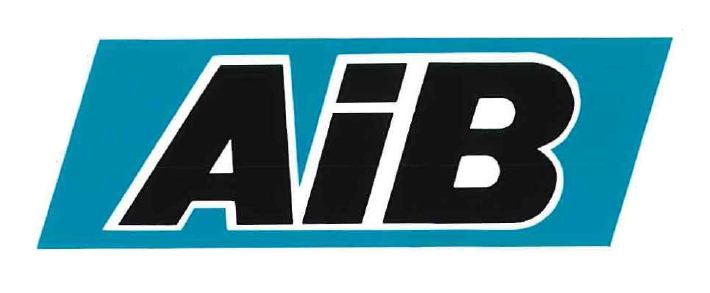
1985 #
Vinçotte develops ten-year periodic safety reviews for nuclear power plants and applies them in Doel 1 and 2 and Tihange 1.
1989 #
Vinçotte and its biggest competitor in Belgium, AIB, merge, making the new holding AIB-Vinçotte by far the biggest TIC company in the Benelux. The legendary AV logo became a well-known symbol for safety on the work floor.
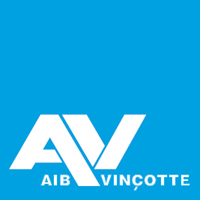
1998 #
Vinçotte Academy is founded, the training centre that becomes one of the largest technical knowledge providers in Belgium.
2004 #
The name of the merged company AIB-Vinçotte is shortened to Vinçotte and the logo used to this day appears.
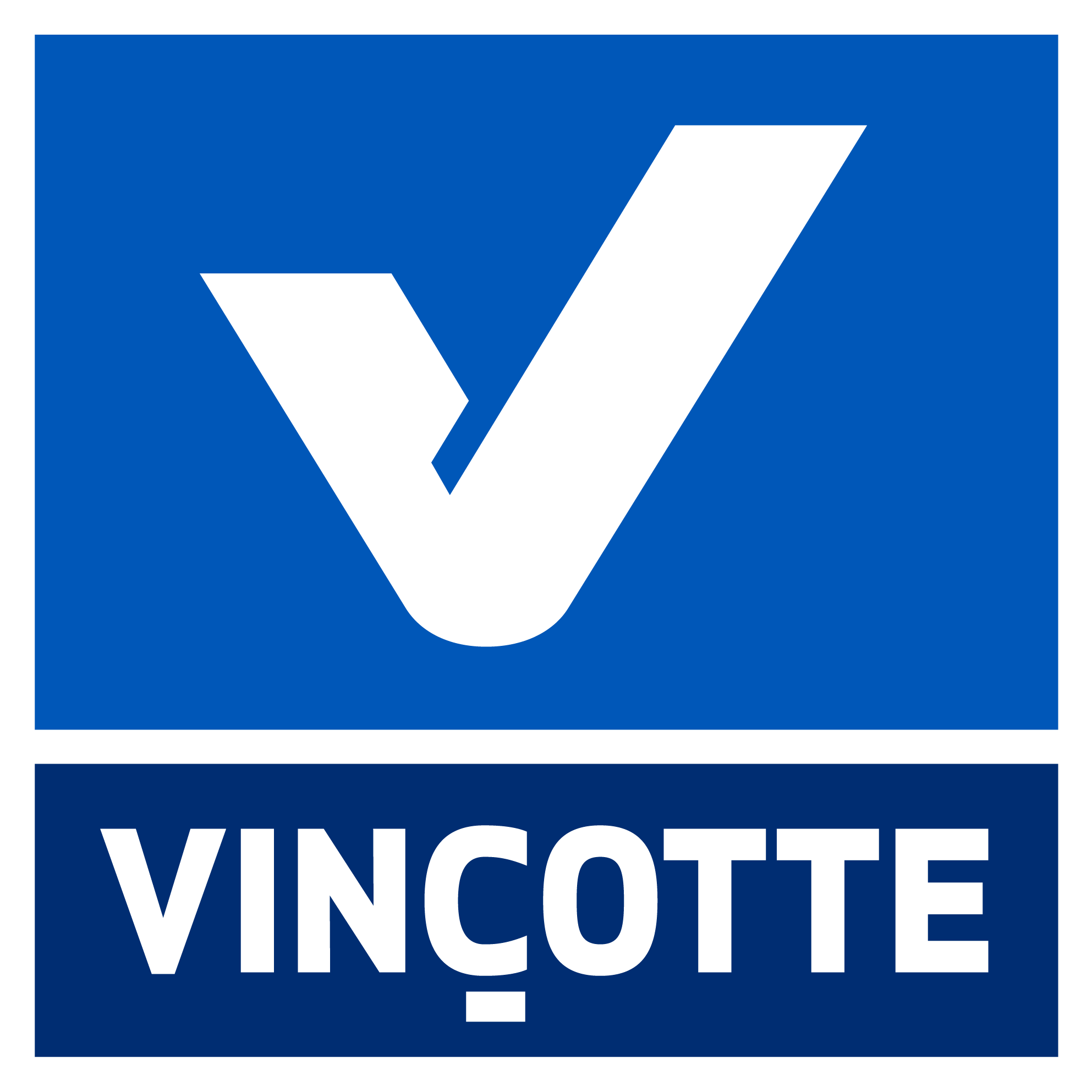
2004-2006 #
As one of the subcontractors, Vinçotte was partly responsible for the Atomium renovation project. In addition to the traditional testing and inspection assignments, the technical specialists from Vinçotte checked the more than 50,000m² of steel profiles in the construction on behalf of Jacques Delens-Besix.
2008 #
Vinçotte's expertise is used in the construction of the largest "tokamak" nuclear fusion reactor in the ITER project in France, which will be completed in 2025.
2011 #
Vinçotte acquires Procerviq. After the dioxin crisis in the 1990s, Vinçotte had already become active for inspections in (secondary) food production, but not yet in the primary (agriculture) and tertiary (distribution and catering) sectors in which Procerviq was active.
2014 #
Vinçotte acquires ISACert the market leader in the field of food safety and sustainability audits and certification. As a certification body, ISACert has been servicing the food and food-related supply chains from farm to fork since 1992 and was formed from the merger of International Suppliers Auditing (ISA) and FoodCert in 2006.
2017 #
Vinçotte sells a number of unprofitable activities and branches abroad and transforms from a technology-oriented company to a market-oriented one, creating sector-specific business units:
Contractors, architects, building managers, hospitals and other construction and building-related companies can now turn to Building.
For the Petrochemical, Chemical & Pharmaceutical sectors, all knowledge will be grouped in PCP.
For energy producers, energy distributors and other process industries, EOP will be set up.
All companies active in manufacturing, logistics, transport, wholesale & manufacturers are served from DML.
Customers requiring highly specialised services are helped from specialised teams:
Controlatom for users of radiation equipment such as hospitals, dentists, radiologists,...
Agri&Food for certification of food producers
Homologation for manufacturers of vehicles wishing to market them in Europe
2018 #
Behind the scenes, Vinçotte is working hard on digitalisation and transformation
The new digital marketing approach is paying off: more than 308,000 visitors came to get information on the Vinçotte website in 2018 thanks to targeted Google Ads, relevant blogs and promotion via the social media channels Linkedin, Facebook and Twitter.
2019 #
Controlatom vzw is integrated into Vinçotte NV.
Jos Windey, COO temporarily becomes CEO a.i. of Vinçotte in December.
The website breaks all records with more than 428,000 visitors, just 120,000 more than in 2018. More than 50 blogs are published about the many services offered by Vinçotte.
2020 #
The Vinçotte website is easily approaching the half-million visitor mark in one year: the Google Analytics counter stands at 562,000 visitors, again 130,000 more than in 2019.
Vinçotte is making a digital leap:
- the VForce project to make planning, inspection and reporting fully digital is rolled out further
- a new website for private individuals is launched on which residential inspections can be easily ordered
- Vinçotte starts using drones and robotics for VRI (Visual Remote Inspections) in confined spaces
- Digi-Tags QR codes that immediately show the inspection status of each asset are tested at a number of large customers
During the COVID-19 crisis, Vinçotte develops the SafeZone certificate that helps companies cope with the pandemic.
Vinçotte Academy is starting up a AREI MasterClass, the first entirely online training course, is introducing e-learning courses for AREI, ATEX, BA4/BA5, and is setting up the AskVinçotte webinars where clients can ask questions about subjects such as AREI, ATEX, etc. so that customers can continue to follow the necessary training courses even during the corona crisis
On October 21st Bernard De Cannière became the new CEO of Vinçotte.
2022 #
An addition to the logo to celebrate Vinçotte's 150 years
